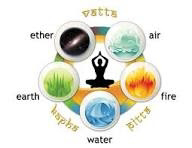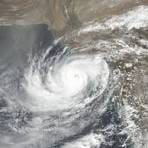The Five Elements Of Universe Pachmahabhuta
Blog on Five Basic element of. universe Panchmahabhut
(Written By Siddhi Jadhav)
Five Basic element of universe
The five elements of the universe in Panchamahabhuta
The five elements of the universe in Panchamahabhuta are earth, water, fire, air, and space.
In English, these elements are:
Earth: Prithvi (पृथ्वी)
Water: Jal (आपः)
Fire: Agni (अग्नि)
Air: Vayu (वायु)
What is Panchamahabhuta ?
panchamahabhuta is a concept in Indian philosophy and Ayurveda that describes the five elements that make up the universe and the human body. The word Panchamahabhuta is made up of three words: "Pancha" meaning five, "Maha" meaning big, and "Bhuta" meaning elements. The concept of Panchamahabhuta is considered an ancient tool for analyzing the universe The five elements are thought to be causative factors that influence biologicals
Origin
The concept of the Panchamahabhutas, or the five great elements, originates from ancient Indian philosophies, particularly within:
Samkhya Philosophy:Samkhya is one of the oldest schools of Indian philosophy. It lays the groundwork for understanding the universe's evolution from Prakriti (primordial nature).
Within Samkhya, the five elements are understood as arising from the subtle elements (Tanmatras), which themselves emerge from Prakriti.
Ayurveda:
Ayurveda, the traditional Indian system of medicine, heavily relies on the Panchamahabhutas.
It views the human body and the entire universe as being composed of these five elements.
Ayurvedic principles use the understanding of these elements to diagnose and treat imbalances in the body.
Vaisheshika Philosophy:
This is another of the six classical schools of Indian philosophy, that deals with metaphysics, and it also deals with the elements.
In essence, the Panchamahabhutas are a fundamental part of the Indian worldview, explaining the composition of all matter. They represent a philosophical and practical understanding of the interconnectedness of everything in the universe.
The five elements of Panchamahabhuta
The Panchamahabhutas are the five basic elements that, according to ancient Indian philosophies, constitute the entirety of the cosmos. Here's a breakdown of each element:
Akasha (Ether/Space):
This is the most stable of the elements.
It represents space, emptiness, and the medium through which all other elements manifest.
It's associated with sound and the sense of hearing.
It is the container for all things.
In the body it is related to the spaces within.
Vayu (Air):
Vayu represents movement, wind, and all gaseous forms.
It's associated with touch and the sense of feeling.
It governs respiration, circulation, and all forms of motion within the body.
Agni (Fire):
Agni represents heat, light, and transformation.
It's associated with sight and the sense of vision.
It governs digestion, metabolism, and the body's temperature.
Jala (Water):
Jala represents fluidity, cohesion, and all liquids.
It's associated with taste and the sense of taste.
It governs bodily fluids, emotions, and lubrication.
Prithvi (Earth):
Prithvi represents solidity, stability, and all solid matter.
It's associated with smell and the sense of smell.
It provides structure to the body, including bones, muscles, and tissues
Each of the Panchamahabhutas is associated with a specific sense:
Akasha (Ether): Sound
Vayu (Air): Touch
Agni (Fire): Sight
Jala (Water): Taste
Prithvi (Earth): Smell
This connection underscores the role of the elements in our sensory experiences and our interaction with the world.
In essence, the Panchamahabhutas provide a profound understanding of the universe's composition and our place within it. They offer a comprehensive framework for health, well-being, and spiritual growth.
Modern day to day application Panchamahabhuta
While the Panchamahabhutas are rooted in ancient philosophy, their principles have relevance and applications in modern contexts, particularly within holistic health and wellness practices. Here's how these concepts are finding






Great work
ReplyDelete